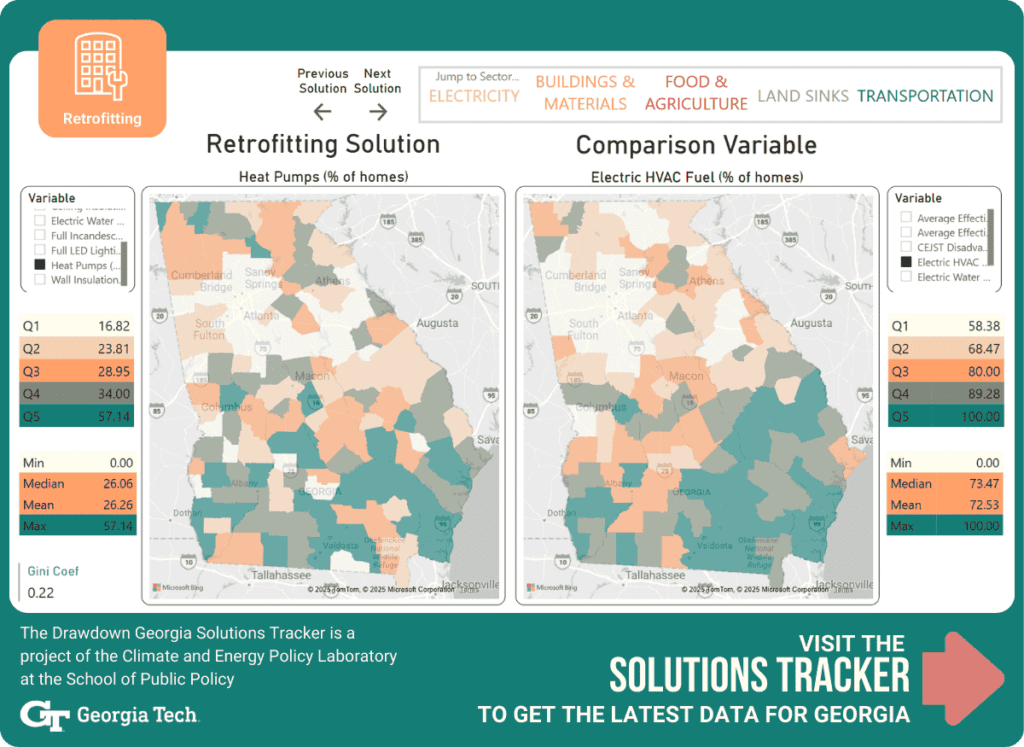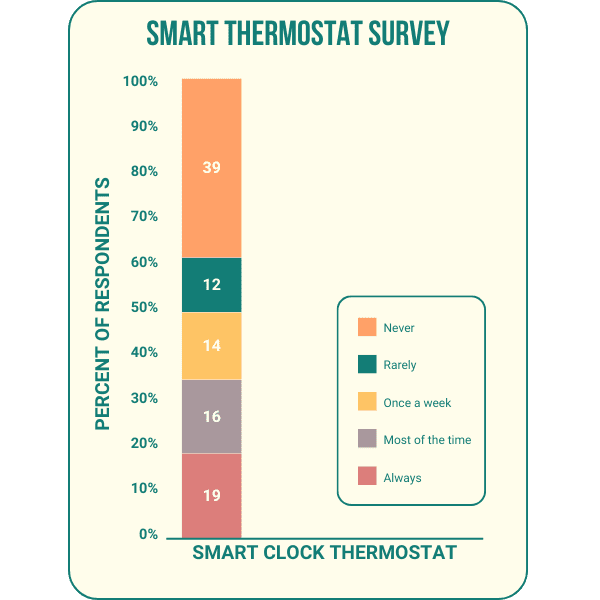The Benefits of Retrofitting
Buildings use electricity and natural gas for heating, ventilation, and air conditioning (HVAC), water heating, lighting, and to power appliances and electronic devices. Retrofitting existing buildings to reduce energy demand can lower greenhouse gas emissions due to these energy uses. This solution considers several key retrofitting options:
- Improving insulation/air sealing of existing buildings
- Replacing conventional lighting with LED lighting in both residential and commercial buildings
- Replacing conventional HVAC systems and gas- and oil-fired furnaces with high-efficiency heat pumps
- Replace conventional windows and water heaters with high-efficiency units.
- Installing water-saving devices such as low-flow fixtures and efficient appliances
- Replacing conventional thermostats with smart thermostats
- Using building automation systems in existing commercial buildings to regulate heating, cooling, lighting, appliances, and more to maximize energy efficiency
- Alternative roof designs like green roofs, which line a roof with soil and vegetation, as well as cool roofs, which reflect solar energy, can reduce a building’s electricity demand and therefore reduce emissions
Access Retrofitting Resources from Drawdown Georgia
Market Readiness And Available Technology
The technologies are mature and market-ready, and innovations continue to improve the efficiency of retrofitting technologies, including energy-efficient materials and smart systems. Modern solutions integrate seamlessly, reducing construction time and enabling same-day upgrades for enhanced comfort.
Historically, retrofitting rates have been relatively low in Georgia due to market barriers that include high upfront costs, lack of information, transaction and administrative costs, and split/misplaced incentives and subsidies. However, policy improvements could make this solution more workable by 2030.
Retrofitting as a Climate Solution in Georgia
The Drawdown Georgia research team estimates that Georgia could reduce emissions by one megaton (Mt) of CO2e by retrofitting 20% of Georgia’s homes to save 20% more energy annually.
What is the Carbon Emissions Reduction Potential by 2030?
Achievable reduction potential is derived by taking the technical reduction potential, outlined below, and developing a more realistic forecast that takes current rates of deployment, market constraints, and other barriers into consideration.
For retrofitting, the Drawdown Georgia research team has calculated the achievable reduction potential to be 1.64 Mt of CO2e.
What Is the Upper Limit of Carbon Emissions Reduction Potential?
Technical reduction potential reflects the upper limit of emissions reductions for this solution without regard to the constraints that exist in the real world, such as economic or political considerations.
For retrofitting, the Drawdown Georgia research team has calculated the technical reduction potential to be 13.7 Mt.
Progress on Retrofitting in Georgia
The penetration of retrofitting technologies has been slower than expected, but will accelerate as the subsidies from the Inflation Reduction Act are distributed. (Subject to change.)

Heat pumps are the dominant form of heating equipment in Georgia’s rural counties, where natural gas is not generally available to homeowners. Heat pumps are not widely used in metro Atlanta, where there is a high prevalence of natural gas heating.
Georgia has launched two new Home Energy Rebates programs to bring down the cost of energy-efficiency improvements and clean energy upgrades with funding from the federal Inflation Reduction Act. Eligible homeowners can receive up to $14,000 for upgrading electrical panels and wiring, installing heat pumps and efficient electric appliances, and more.

The Inflation Reduction Act offers tax credits for centralized heat pumps under Section 45, and low-carbon heat systems for industrial facilities under Section 48C, and for geothermal heat pumps under the Residential Clean Energy Tax Credit. Georgia has been allocated $109 million, primarily to provide income-based point-of-sale rebates under the High-Efficiency Electric Home Rebate Act (HEEHRA). Beyond the IRA, Georgia will benefit from expanded federal funding for the Weatherization Assistance Program and Low-Income Home Energy Assistance Program (LIHEAP), which promote the retrofitting of homes.
Most eco-certified commercial buildings are located in Georgia’s urban areas. High rates of eco-certification among commercial buildings occur in wealthy urban areas and in counties with large military bases, reflecting the high energy standards required by the USDOE’s Federal Energy Management Program.
Challenges in Scaling Retrofitting

Although smart thermostats are a key energy efficiency upgrade, they have seen mixed adoption among Georgia residents. According to a Georgia Tech/UGA survey of nearly 1,700 state residents, funded by Drawdown Georgia, 19% have fully integrated these devices into their energy management practices, while 16% use them "most of the time." However, a significant 39% have not adopted smart thermostats at all, suggesting barriers such as high upfront costs, lack of awareness, or challenges in retrofitting older homes with new technology.
How Reliable Is Our Estimate For This Drawdown Georgia Climate Solution?
Preliminary analysis based on NEMS data as obtained from EIA’s Annual Energy Outlook 2018 (reference case vs. new-efficiency case, with U.S. level results proportioned for Georgia) suggests that many of the individual solutions do not necessarily meet the threshold of 1 Mt CO2 annual reduction.
However, a strategic combination of technologies (for both residential and commercial sectors) as part of a retrofit bundle can provide carbon emissions reduction potential well beyond the 1 Mt threshold. The carbon emissions reduction potential can be further increased by promoting replacement strategies that favor more efficient solutions relative to the baseline alternatives for technologies that have reached end-of-life and need replacement.
Cost Competitiveness
Review of literature and expert survey feedback indicate that the individual solutions that retrofits are typically cost-effective, except for heat pumps, which may not be cost-effective depending on the type of retrofit (Nadel & Ungar, 2019). However, the bundles can be selected with an emphasis on cost-effective solutions, and highly cost-effective solutions like smart thermostats and LED lighting can be used to offset less cost-effective solutions like heat pumps.
Beyond Carbon Attributes
According to the 2017 American Housing Survey, Georgia has an estimated 4.2 million homes, with 2.8 million of these being single-family detached residential units.
The greatest social benefits from the implementation of retrofitting can be seen through air quality improvements. These improvements result from an increase in energy efficiency and a reduction in energy demand from residential and commercial buildings. Improved building health can increase productivity and lower absenteeism, particularly in commercial buildings and office environments.
However, Atlanta ranks fourth highest in median energy burden levels and third highest among low-income household populations compared to other major cities in the United States. This indicates that there is a “beyond energy” benefit to retrofitting residential homes to decrease the economic hardship of families.
However, access to retrofits is often cost-prohibitive for low-income communities without external financing and support. Without the inclusion of lower-income residents, retrofitted home value increases can contribute to neighborhood gentrification and a reduction in affordable housing.



